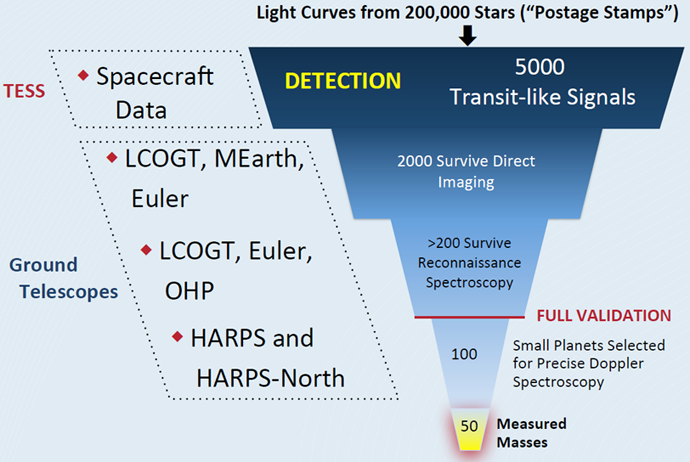This website is kept for archival purposes only and is no longer updated.
Integral to the TESS mission is a ground-based follow-up program. While TESS will discover thousands of new exoplanet candidates, ground-based observations are needed to confirm that candidates, the TESS Objects of Interest (TOIs), are actually planets. By using ground-based telescopes to obtain deep images of the TOIs, and other telescopes to obtain spectra of the host stars, the TESS science team will be able to determine with high confidence which of the TOIs are actually planets. The planets will then be observed using high-precision Doppler spectroscopy, in order to measure the masses of the planets. The combination of planet mass, obtained in this way, and the planet diameter, obtained directly from the spacecraft observations, will allow scientists to determine the overall composition of the planets. Are they rocky planets, like Earth? Water planets? Gas planets? Or something more exotic?
Follow-up observations will be made at a myriad of observatories located around the world, with the help of a large number of collaborators on the TESS project. Further, because data from the TESS mission will be made public as soon as possible, members of the astronomical community in the United States and around the world will be able to contribute to the follow-up observing campaigns, leading to new understanding of exoplanets and the evolution of planetary systems.

Above Graphic: Small Planet Validation and Mass Measurements Process: Achieving a Baseline Science Requirement of measuring the masses of fifty planets with radii less than 4 REARTH.